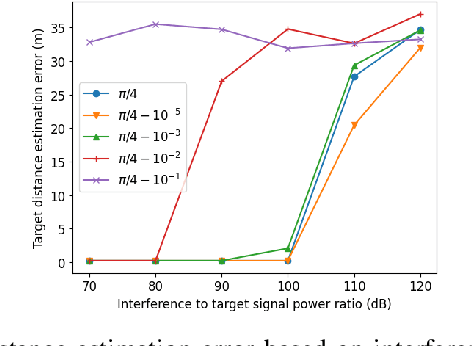Shahrokh Valaee
Doppler Radiance Field-Guided Antenna Selection for Improved Generalization in Multi-Antenna Wi-Fi-based Human Activity Recognition
Sep 18, 2025Abstract:With the IEEE 802.11bf Task Group introducing amendments to the WLAN standard for advanced sensing, interest in using Wi-Fi Channel State Information (CSI) for remote sensing has surged. Recent findings indicate that learning a unified three-dimensional motion representation through Doppler Radiance Fields (DoRFs) derived from CSI significantly improves the generalization capabilities of Wi-Fi-based human activity recognition (HAR). Despite this progress, CSI signals remain affected by asynchronous access point (AP) clocks and additive noise from environmental and hardware sources. Consequently, even with existing preprocessing techniques, both the CSI data and Doppler velocity projections used in DoRFs are still susceptible to noise and outliers, limiting HAR performance. To address this challenge, we propose a novel framework for multi-antenna APs to suppress noise and identify the most informative antennas based on DoRF fitting errors, which capture inconsistencies among Doppler velocity projections. Experimental results on a challenging small-scale hand gesture recognition dataset demonstrate that the proposed DoRF-guided Wi-Fi-based HAR approach significantly improves generalization capability, paving the way for robust real-world sensing deployments.
DoRF: Doppler Radiance Fields for Robust Human Activity Recognition Using Wi-Fi
Jul 16, 2025Abstract:Wi-Fi Channel State Information (CSI) has gained increasing interest for remote sensing applications. Recent studies show that Doppler velocity projections extracted from CSI can enable human activity recognition (HAR) that is robust to environmental changes and generalizes to new users. However, despite these advances, generalizability still remains insufficient for practical deployment. Inspired by neural radiance fields (NeRF), which learn a volumetric representation of a 3D scene from 2D images, this work proposes a novel approach to reconstruct an informative 3D latent motion representation from one-dimensional Doppler velocity projections extracted from Wi-Fi CSI. The resulting latent representation is then used to construct a uniform Doppler radiance field (DoRF) of the motion, providing a comprehensive view of the performed activity and improving the robustness to environmental variability. The results show that the proposed approach noticeably enhances the generalization accuracy of Wi-Fi-based HAR, highlighting the strong potential of DoRFs for practical sensing applications.
MORIC: CSI Delay-Doppler Decomposition for Robust Wi-Fi-based Human Activity Recognition
Jun 15, 2025Abstract:The newly established IEEE 802.11bf Task Group aims to amend the WLAN standard to support advanced sensing applications such as human activity recognition (HAR). Although studies have demonstrated the potential of sub-7 GHz Wi-Fi Channel State Information (CSI) for HAR, no method currently performs reliably in real-world scenarios. This work tackles the poor generalization of Wi-Fi-based HAR by introducing an innovative approach to extracting and utilizing movement-related representations, which makes it robust to noise and static environmental properties. This is achieved by transforming CSI signals into the delay profile space and decomposing them into various Doppler velocities, which serve as informative projections of a mobile point's velocity from different unknown random angles. To mitigate the impact of this randomness, MORIC is introduced as a novel time series classification model based on random convolutional kernels, designed to be invariant to the random order and repetition of input representations, thereby enabling robust Wi-Fi CSI-based activity classification. Experimental results on the collected dataset demonstrate that the proposed method outperforms state-of-the-art approaches in terms of generalization accuracy for hand motion recognition, particularly for challenging gestures. Furthermore, incorporating a small number of calibration samples leads to a significant improvement in accuracy, enhancing the practicality of the method for real-world deployment.
RIS Partitioning and User Clustering for Resilient Non-Orthogonal Multiple Access UAV Networks
May 01, 2025



Abstract:The integration of reconfigurable intelligent surfaces (RISs) and unmanned aerial vehicles (UAVs) has emerged as a promising solution for enhancing connectivity in future wireless networks. This paper designs well-connected and resilient UAV networks by deploying and virtually partitioning multiple RISs to create multiple RIS-aided links, focusing on a link-layer perspective. The RIS-aided links are created to connect user equipment (UE) to blocked and reliable UAVs, where multiple UEs can transmit to same UAV via RIS using non-orthogonal multiple access (NOMA), granting access to UEs and maximizing network connectivity. We first derive exact and approximated closed-form expressions for signal-to-interference plus noise ratio (SINR) based on aligned and non-aligned RIS-aided beams. Then, we propose to formulate the problem of maximizing network connectivity that jointly considers (i) UE NOMA clustering, (ii) RIS-aided link selection, and (ii) virtual RIS partitioning. This problem is a computationally expensive combinatorial optimization. To tackle this problem, a two-step iterative approach, called RIS-aided NOMA, is proposed. In the first step, the UEs are clustered to the RISs according to their channel gains, while UAVs are associated to those generated clusters based on their reliability, which measures the criticality of UAVs. The second step optimally partitions the RISs to support each of the cluster members. In this step, we derive the closed-form equations for the optimal partitioning of RISs within the clusters. Simulation results demonstrate that the proposed RIS-aided NOMA yields a gain of 30% to 40%, respectively, compared to UAV traditional scheme. The finding emphasizes the potential of integrating RIS with UAV communications as a robust and reliable connectivity solution for future wireless communication systems.
Model-Based Deep Learning Tuning of Reconfigurable Intelligent Surface for OFDM Radar Interference Mitigation
Apr 06, 2025



Abstract:This paper presents a deep learning-based framework for enhancing radar systems in the presence of interference, leveraging Reconfigurable Intelligent Surfaces (RIS). The proposed technique uses a modified MUSIC algorithm to estimate the angles of the target and interference. The core of the method is a deep learning model that optimizes the RIS configuration to reduce the impact of interference while maintaining accurate angle estimates. The model consists of a multi-layer perceptron (MLP) that takes estimated angles as inputs and outputs the configuration of the RIS. A specially designed loss function ensures that the interference is properly suppressed and the target remains detectable. To further enhance performance, a convolution technique is introduced to create a notch at the interference angle, ensuring better separation between the target and interference. Additionally, the method is extended to work over multiple subcarriers, improving robustness and performance in practical scenarios. Simulation results show that the technique enhances the signal-to-interference-plus-noise ratio (SINR) and provides accurate localization estimates, demonstrating its potential for radar systems in complex environments.
Reconfigurable Intelligent Surface for OFDM Radar Interference Mitigation
Feb 20, 2025


Abstract:This paper introduces a method to reduce interference in OFDM radar systems through the use of reconfigurable intelligent surfaces (RIS). The method involves adjusting the RIS elements to diminish interference effects and improve the clarity of the desired signal. A neural network framework is established to optimize the configurations of the RIS, aiming to lower the power from unwanted sources while enhancing the target signal. The network produces settings that focus on maximizing the signal at the intended angle. Utilizing a convolution-based approach, we illustrate the effective tuning of RIS elements for interference mitigation and the creation of nulls in the direction of interference, resulting in a better signal-to-interference-and-noise ratio (SINR). Simulations confirm the effectiveness of the proposed method in a radar context, demonstrating its capability to enhance target detection while reducing interference.
Uni-polarized RIS Beamforming for Improving Connectivity of Multi-RIS-Assisted D2D Networks
Oct 07, 2024



Abstract:This paper introduces a novel method to enhance the connectivity of multi-reconfigurable intelligent surface-assisted device-to-device networks, referred to as multi-RIS-assisted D2D networks, through a unique phase shift determination. The proposed method aims to optimize the power-domain array factor (PDAF), targeting specific azimuth angles of reliable user equipments (UEs) and enhancing network connectivity. We formulate an optimization problem that jointly optimizes RIS beamforming design, RIS-aided link selection, and RIS positioning. This problem is a mixed-integer non-binary programming. The optimization problem is divided into two sub-problems, which are solved individually and iteratively. The first sub-problem of RIS-aided link selection is solved using an efficient perturbation method while developing genetic algorithm (GA) to obtain RIS beamforming design. The GA optimizes the RIS phase shift to generate multiple RIS-aided narrowbeams that exhibit significant PDAF towards azimuth angles of interest while minimizing PDAF towards undesired azimuth angles. The second sub-problem of RIS positioning is addressed using the Adam optimizer. Numerical simulations verify the superiority of the proposed scheme in improving network connectivity compared to other schemes, including those utilizing distributed small RISs, each generating one RIS-aided link.
Broad and Spectral-Efficient Beamforming for the Uni-polarized Reconfigurable Intelligent Surfaces
Jul 22, 2024



Abstract:A reconfigurable intelligent surface (RIS) is composed of low-cost elements that manipulate the propagation environment from a transmitter by intelligently applying phase shifts to incoming signals before they are reflected. This paper explores a uni-polarized RIS with linear shape aimed at transmitting a common signal to multiple user equipments (UEs) spread across a wide angular region. To achieve uniform coverage, the uni-polarized RIS is designed to emit a broad and spectral-efficient beam featuring a spatially flat-like array factor, diverging from the conventional narrow beam approach. To achieve this objective, we start by deriving probabilistic lower and upper bounds for the average spectral efficiency (SE) delivered to the UEs. Leveraging the insights from the lower bound, we focus on optimizing the minimum value of the power domain array factor (PDAF) across a range of azimuth angles from \(-\frac{\pi}{2}\) to \(\frac{\pi}{2}\). We employ the continuous genetic algorithm (CGA) for this optimization task, aiming to improve the SE delivered to the UEs while also creating a wide beam. Extensive simulation experiments are carried out to assess the performance of the proposed code, focusing on key metrics such as the minimum and average values of the PDAF and the SE delivered to the UEs. Our findings demonstrate that the proposed code enhances the minimum SE delivered to the UEs while maintaining the desired attribute of a broad beam. This performance is notably superior to that of established codes, including the Barker, Frank, and Chu codes.
HIERVAR: A Hierarchical Feature Selection Method for Time Series Analysis
Jul 22, 2024



Abstract:Time series classification stands as a pivotal and intricate challenge across various domains, including finance, healthcare, and industrial systems. In contemporary research, there has been a notable upsurge in exploring feature extraction through random sampling. Unlike deep convolutional networks, these methods sidestep elaborate training procedures, yet they often necessitate generating a surplus of features to comprehensively encapsulate time series nuances. Consequently, some features may lack relevance to labels or exhibit multi-collinearity with others. In this paper, we propose a novel hierarchical feature selection method aided by ANOVA variance analysis to address this challenge. Through meticulous experimentation, we demonstrate that our method substantially reduces features by over 94% while preserving accuracy -- a significant advancement in the field of time series analysis and feature selection.
Reflection Map Construction: Enhancing and Speeding Up Indoor Localization
Jun 04, 2024



Abstract:This paper introduces an indoor localization method using fixed reflector objects within the environment, leveraging a base station (BS) equipped with Angle of Arrival (AoA) and Time of Arrival (ToA) measurement capabilities. The localization process includes two phases. In the offline phase, we identify effective reflector points within a specific region using significantly fewer test points than typical methods. In the online phase, we solve a maximization problem to locate users based on BS measurements and offline phase information. We introduce the reflectivity parameter (\(n_r\)), which quantifies the typical number of first-order reflection paths from the transmitter to the receiver, demonstrating its impact on localization accuracy. The log-scale accuracy ratio (\(R_a\)) is defined as the logarithmic function of the localization area divided by the localization ambiguity area, serving as an accuracy indicator. We show that in scenarios where the Signal-to-Noise Ratio (SNR) approaches infinity, without a line of sight (LoS) link, \(R_a\) is upper-bounded by \(n_r \log_{2}\left(1 + \frac{\mathrm{Vol}(\mathcal{S}_A)}{\mathrm{Vol}(\mathcal{S}_{\epsilon}(\mathcal{M}_s))}\right)\). Here, \(\mathrm{Vol}(\mathcal{S}_A)\) and \(\mathrm{Vol}(\mathcal{S}_{\epsilon}(\mathcal{M}_s))\) represent the areas of the localization region and the area containing all reflector points with a probability of at least \(1 - \epsilon\), respectively.
 Add to Chrome
Add to Chrome Add to Firefox
Add to Firefox Add to Edge
Add to Edge